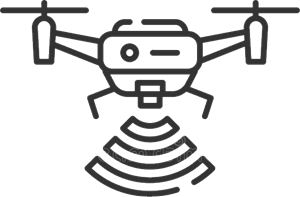ERP Implementation Cost and Duration—A Tale of Two Companies (Part 2)
Last updated: December 05, 2022 Read in fullscreen view
- 15 Jun 2022
 ERP Implementation Strategies: Big Bang and Phased rollout
ERP Implementation Strategies: Big Bang and Phased rollout - 03 Jan 2022
 ERP System Scalability—A Tale of Two Companies (Part 3)
ERP System Scalability—A Tale of Two Companies (Part 3) - 19 Jul 2022
 Odoo vs Sage Comparison
Odoo vs Sage Comparison - 04 Jan 2022
 Freedom of ERP Deployment Choice—A Tale of Two Companies (Part 4)
Freedom of ERP Deployment Choice—A Tale of Two Companies (Part 4) - 01 Jan 2022
 Planning for Successful ERP Implementation Projects (Part 1)
Planning for Successful ERP Implementation Projects (Part 1)
As part of a five-part series entitled 'A Tale of Two Companies', we explore the different hypothetical experiences of two fictitious businesses as they implement new/upgraded ERP systems. Today, in part two we look at ERP Implementation cost and duration.
This blog post is part two of a five-part series, entitled 'A Tale of Two Companies'. In this series, we explore the different hypothetical experiences of two fictitious companies as they upgrade/change to new ERP systems.
- View the introduction to 'A Tale of Two Companies', here
- View the part one blog post, here
“The bus will be here in 15 minutes. Are you all ready?” said Company A's operations director as he checked that he has all the tickets for his team's river cruise. The company's ERP implementation team has been recognized as this quarter's Company Project Stars, delivering key performance indicators which signal the company is on track to recover their ERP investment inside one year.
A 12 month payback period was part of Company A's ambitious pre-implementation goals, and such early performance has been rewarded with the team taking a two-day trip, starting with a river lunch cruise.
On the other hand, insufficient planning has caused an array of challenges for Company Z throughout its upgrade, evidenced by the number of delayed go-live dates.
“We just don't have the ability to keep increasing the budget like this,” said Company Z's CFO as she reviewed the head of operations' updated report. “The ERP budget is already close to twice what it originally was, and based on these forecasts, expenses could run as high as three times our original plan.... I don't have the capacity for this.”
Due to poor change management, staff have been inadequately trained which is resulting in substantial user error, low staff morale, and a ballooning consulting expense. The head of operations is having to solve problems on the fly to mitigate the snowballing productivity issues which are having a significant impact on the company's bottom line.
The implementation cost and duration summary
Company Z
- Implementation duration was 22 months, four months over schedule.
- “On reflection the timeframe was unrealistic and the project scope altered dramatically. Our total cost of ownership is tracking at almost three times what we budgeted for,” said the head of operations.
- Due to insufficient planning during the selection process, Company Z has recognized that its upgraded system lacks functionality. The company will need to fix this in the next 12-18 months, resulting in a mixture of opportunity costs and custom development issues.
- Due to haphazard training delivery, on-demand customization requirements, and a myriad of go-live challenges, Company Z's consulting expenses alone will be close to what the company budgeted for the entire project. Based on the current forecast, Company Z's EPR payback period will be between three to five years.
- “The more we uncover, the more I realise that our new system does not sufficiently meet the demands of our ever-changing industry. A poor solution fit in addition to the lack of engagement and collaboration from our vendor has had a compounding effect on our implementation cost and duration,” the head of operations said.
Company A
- Implementation duration was 19 months, as planned.
- “While there were minor adjustments to project scope, they occurred early in the process, fit within our contingency, and necessary adjustments to the implementation plan were made to accommodate the changes. Overall, the total cost of ownership is within budget,” said the operations director.
- Due to thorough planning in the selection process, Company A has a scalable system which will continue to provide a positive return on investment.
- Company A was diligent in its planning process to ensure it had a considered, sophisticated project plan congruent with implementing a new ERP system. The company adequately budgeted for its total cost of ownership beyond the direct software costs which gave them the necessary visibility to choose the right path forward.
- “We recognize the importance of mutuality in our business relationships. From day one, our vendor was committed to understanding the intricacies of our business and demonstrating how their industry capabilities and expertise will deliver solutions to meet our needs today and tomorrow. An ERP system and partner, fit for purpose is what set us up for success at implementation and beyond,” said the operations director.
Whether you are looking for your first ERP system or upgrading from an existing system, the evaluation, selection and implementation process are all extremely important for your company's future success.
Continuing reading - A Tale of Two Companies Part 3: ERP System Scalability






















